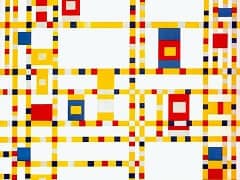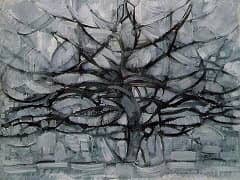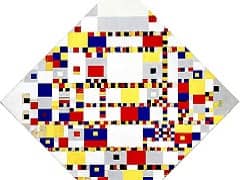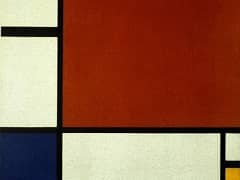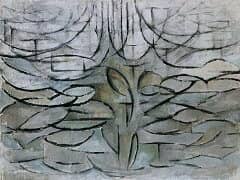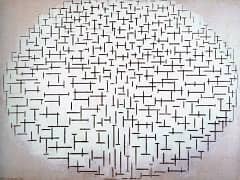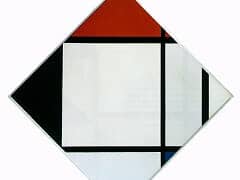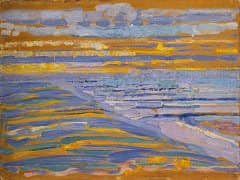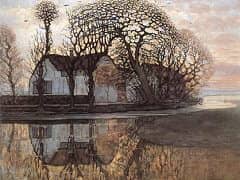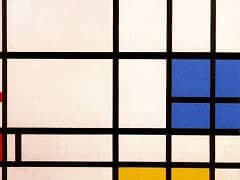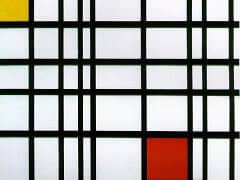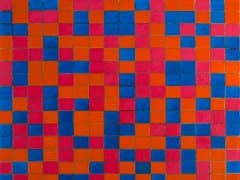Composition No.II 1920 by Piet Mondrian
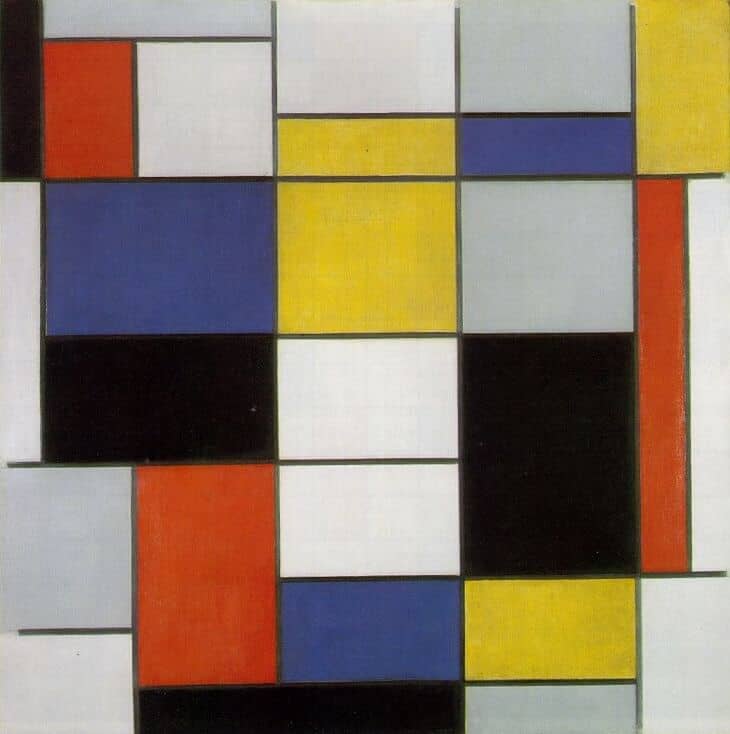
An early example of Mondrian's pure geometric abstraction, Composition No.II dates from his involvement with the De Stijl group. The strict use of horizontal and vertical lines and primary colors with black and grey is characteristic of De Stijl. Mondrian's aim to evoke a spiritual equilibrium was influenced by the mysticism of Theosophy, which sought universal order. He had been working with chequerboard grids before he began this painting, which introduced greater variety. He told van Doesburg: 'now I do not always keep to the proportional division'
It is one of the largest of a stylistically related group of seven paintings dated from 1919 to early 1921, in which he used larger rectangles than before and with black, several different tones of grey, and the three primary colors mixed with grey. Two photographs taken of his studio at 26 Rue du Depart, Paris, apparently on the same day some time in the mid 1920s, show this particular picture hanging on the wall above a doorway and seem to prove that he must have subsequently repainted parts of the composition. For example, all the rectangles which are now yellow appear in the photographs to be very dark in tone. (The yellows were clearly applied over darker colors). Though there seems to be no record of exactly when these photographs were taken, J.M. Joosten points out that one appears to have been first reproduced in the Dutch newspaper De Telegraaf on 12 June 1926 and the other in Der Querschnitt, VIII, February 1928. The probability is that the painting, though signed and dated 1920, was reworked and finished between about 1926 and the date of its first exhibition in 1928.

